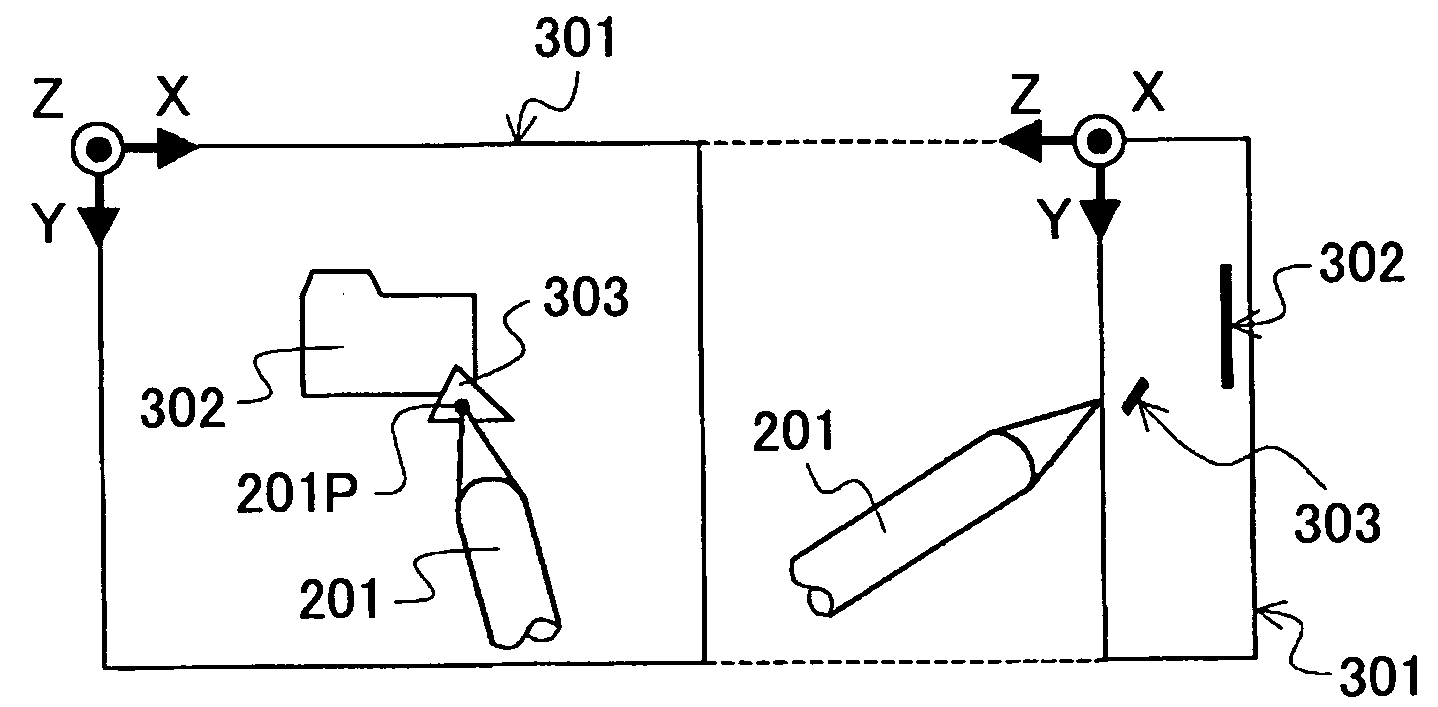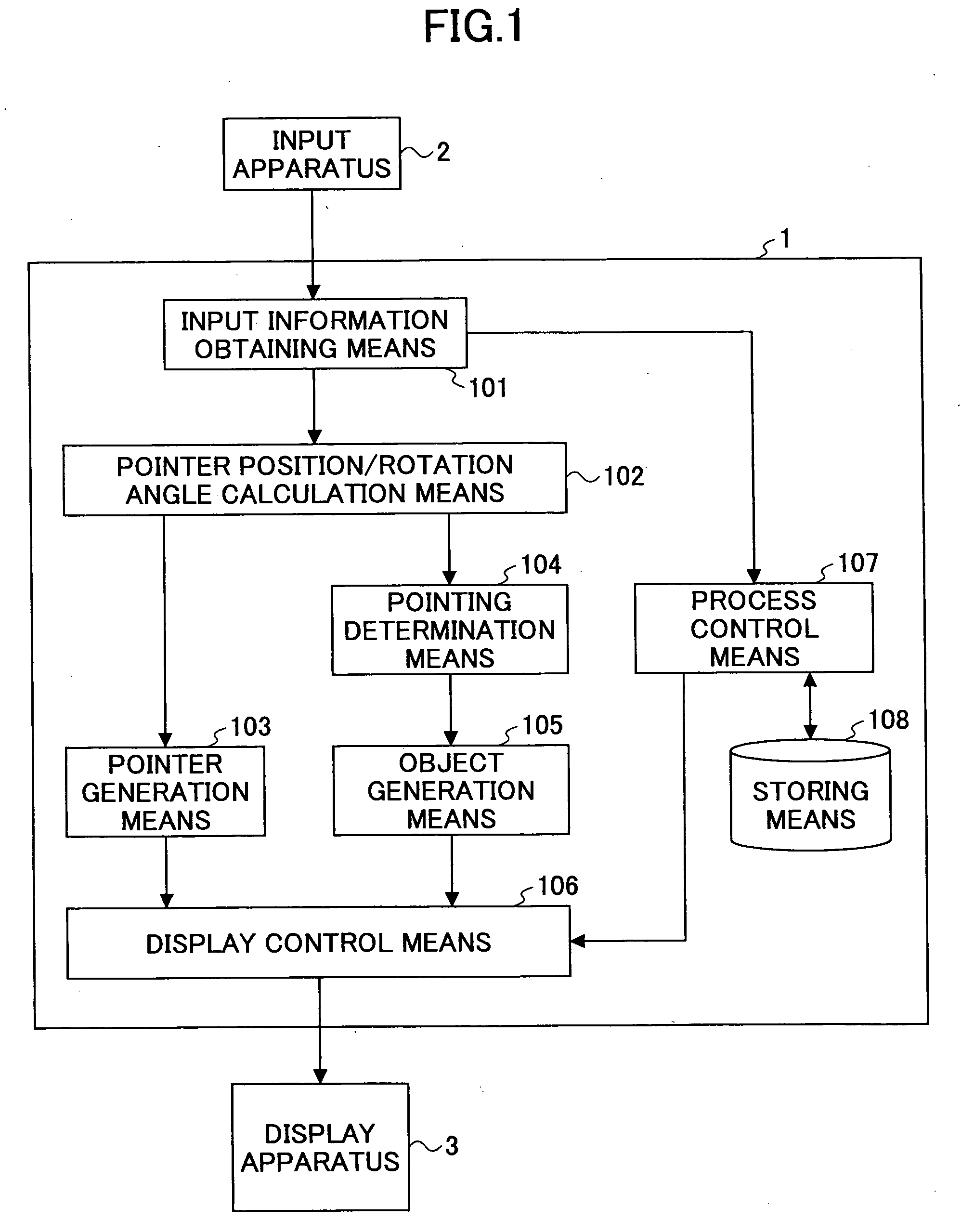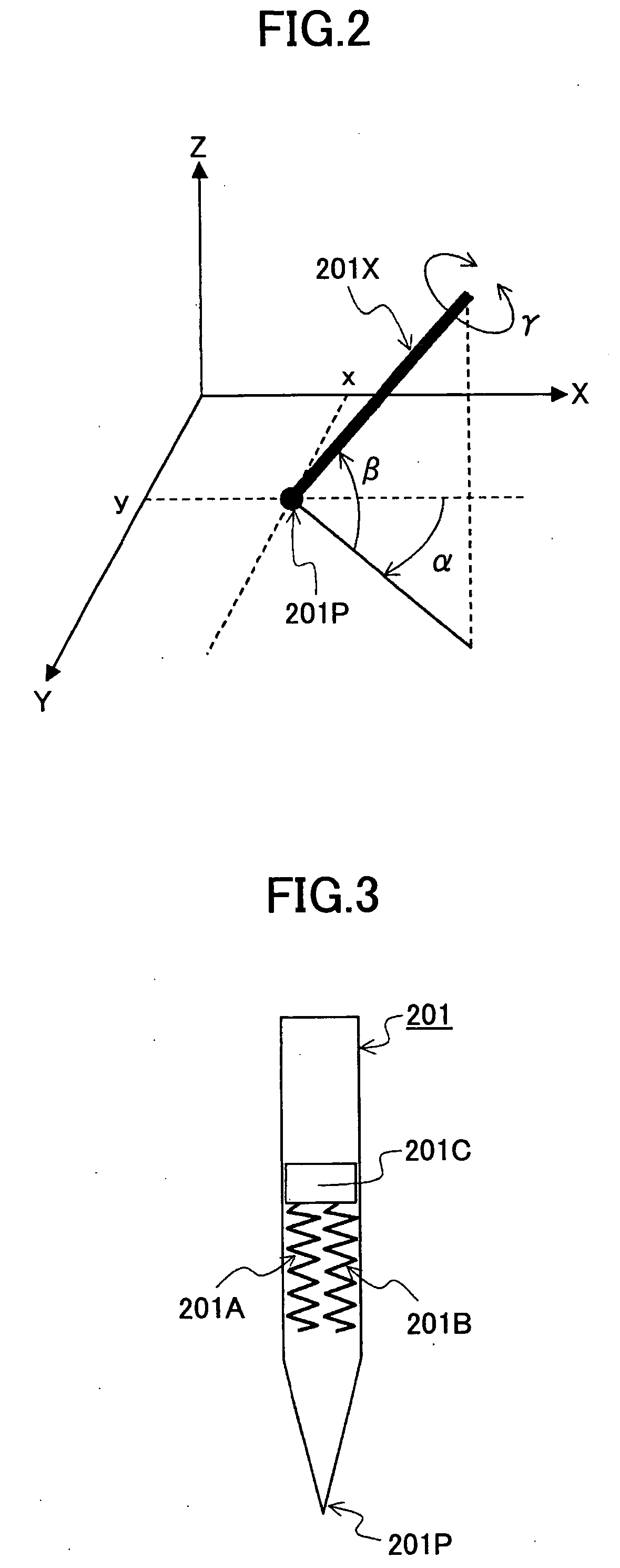3D Pointing Method, 3D Display Control Method, 3D Pointing Device, 3D Display Control Device, 3D Pointing Program, and 3D Display Control Program
a technology of pointing method and pointing program, which is applied in the direction of instruments, computing, electric digital data processing, etc., can solve the problems of affecting the accuracy of pointing operation, and complicated operation, so as to achieve the effect of reducing fatigue from pointing operation for a long time, improving convenience of operator, and easy pointing operation
- Summary
- Abstract
- Description
- Claims
- Application Information
AI Technical Summary
Benefits of technology
Problems solved by technology
Method used
Image
Examples
first embodiment
[0366]First, the first embodiment of the present invention is described. The first embodiment corresponds to the first object.
[0367]The three-dimensional pointing method of the first embodiment of the present invention is a method for pointing at an object and operating the object that is pointed at, with a pen-shaped input apparatus, in a three-dimensional space represented by a display apparatus that can perform three-dimensional display. The pen-shaped input apparatus (to be referred to as “input pen” hereinafter) includes a pen-shaped operation means for performing operation, by an operator who holds the operation means, to point at the object and to perform operation for the object, and a detection means for detecting information of the input pen such as a position of the pen tip, pen pressure, orientation of the axis and the like. Then, in the three-dimensional pointing method in the first embodiment, based on the information detected by the detection means, the position, shap...
embodiment 1-1
[0381]FIGS. 4A-7 are schematic diagrams for explaining the three-dimensional pointing method of the embodiment 1-1 of the present invention. FIG. 4A shows a front view, a right side view and a bottom view showing an example of a three-dimensional space represented on the display apparatus, FIG. 4B shows a bird's-eye view of an example of the three-dimensional space represented on the display apparatus, each of FIGS. 5A, 5B and 5c shows a bird's-eye view showing situations in the three-dimensional space when operating with an input pen, each of FIGS. 6A, 6B and 6c shows a front view and a right side view showing situations in the three-dimensional space when operating with an input pen, and FIG. 7 shows a flowchart showing the process procedure of the three-dimensional pointing method in the embodiment 1-1. FIGS. 6A, 6B and 6C correspond to FIGS. 5A, 5B and 5C respectively.
[0382]The three-dimensional pointing method of this embodiment 1-1 is a method for pointing at an object that is...
embodiment 1-3
[0430]FIGS. 11A-13C are schematic diagrams for explaining the three-dimensional pointing method of the embodiment 1-3 of the present invention. FIG. 11 shows a bird's-eye view showing a situation in the three-dimensional space when operating with an input pen, FIG. 12 shows a front view showing a situation in the three-dimensional space when operating with an input pen, and FIG. 13 is a flowchart showing a process procedure of the three-dimensional pointing method of the embodiment 1-3.
[0431]In embodiments 1-1 and 1-2, pointing methods are described for performing display control of the pointer in the three-dimensional space 301 represented on the display apparatus 3 and display control of the pointed object in response to operation of the input pen 201 of the input apparatus 2.
[0432]However, when pointing at the object in the three-dimensional space 301 by the method of the embodiments 1-1 and 1-2, there are many cases in which operation such as moving, editing and processing of th...
PUM
 Login to View More
Login to View More Abstract
Description
Claims
Application Information
 Login to View More
Login to View More - R&D
- Intellectual Property
- Life Sciences
- Materials
- Tech Scout
- Unparalleled Data Quality
- Higher Quality Content
- 60% Fewer Hallucinations
Browse by: Latest US Patents, China's latest patents, Technical Efficacy Thesaurus, Application Domain, Technology Topic, Popular Technical Reports.
© 2025 PatSnap. All rights reserved.Legal|Privacy policy|Modern Slavery Act Transparency Statement|Sitemap|About US| Contact US: help@patsnap.com



